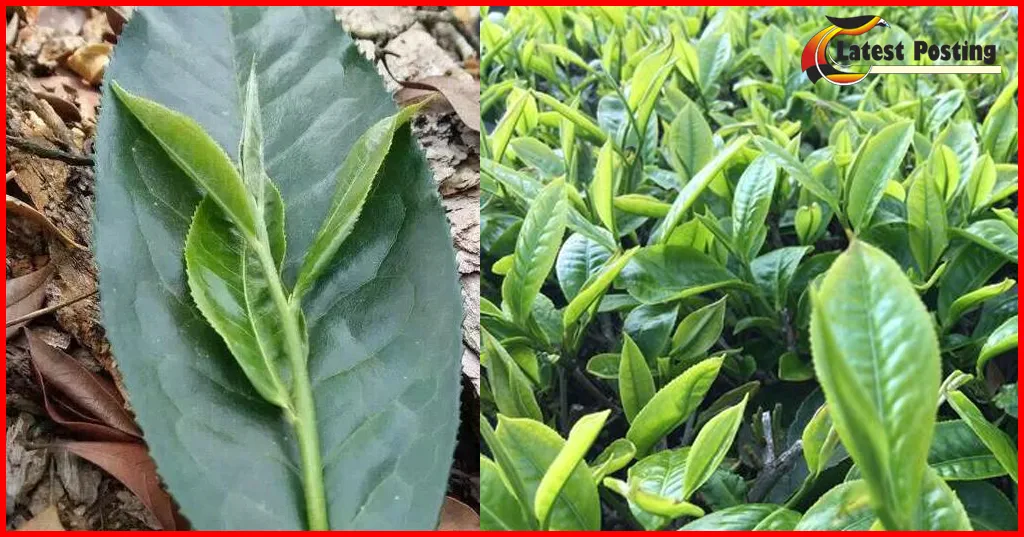What is the “core secret” of Pu’er tea? This question cannot be answer by tea drinkers who are too obsess. It is just like a “drama fan” who cannot clearly explain the fundamental meaning of the drama he is obsess with. Those who can see things more clearly are mostly those who keep a distance and have an objective perspective.
As far as I know, two Northeast scientists, Mr. Sheng Jun and Mr. Chen Jie, who are far away from Pu’er, Yunnan China , have done admirable scientific research on Pu’er tea. Even Mr. Shen Peiping , a Pu’er tea expert from Yunnan, has praised this .
Therefore, I hope tea drinkers can also listen to the contemporary scientific discourse on Pu’er tea research . Even if you encounter some unfamiliar concepts, you may as well put down your cups and listen to it. Chinese food research cannot always stay at the superficial classification and external description.
General thinking
For the convenience of communication, we can first find a common entry point between scientific thinking and general thinking, that is, fermentation. Everyone knows that the main difference between Pu’er tea and other types of tea lies in fermentation. Green tea can be called ” unfermented tea “, oolong tea and black tea can be called “lightly fermented tea”, ” semi-fermented tea ” or “single fermented tea”, and Pu’er tea can be called ” post-fermented tea ” or “long-fermented tea”. In Pu’er tea, raw tea can be called “naturally fermented tea” and cooked tea can be called “artificially fermented tea”. You see, once we say “fermentation”, almost all types of tea are covered.
So, what exactly is “fermentation”? Simply put, it is the process by which humans use microorganisms to change and enhance the texture of food cells to produce unique flavors. Most of the foods we secretly crave are related to fermentation, such as various fine wines, yogurt, cheese, fermented bean curd, kimchi, natto , soy sauce, vinegar, etc. Even for grains, fermented steamed buns and bread are softer and more nutritious than unfermented flour products. In medicine, the production of vitamins, amino acids, insulin, antibiotics, vaccines, hormones, etc. is also inseparable from the fermentation process.
The protagonists of fermentation are microorganisms.
When it comes to microorganisms, the topic is very broad. Scientists tell us that humans have only appeared on the earth for a few million years, while microorganisms have existed for 3.5 billion years. In addition to the “two domains” of animals and plants, the ” third domain ” of life in the world is microorganisms, which established the theory of “three domains of life”. We still know very little about these infinitely small and infinitely dense, extremely long-lived and extremely mysterious “little things”, but they have forced contemporary scientists from various countries to establish bioengineering, including genetic engineering, cell engineering, enzyme engineering and other branches, to study them.
Although the research has just begun, the miracles are already amazing. I heard that even heavy work such as oil extraction can be done by microorganisms sooner or later. I really don’t know how these “little things” will change the world in a few years.
Yunnan’s Pu’er tea
Before we used technological equipment to mess with them, these “little things” had been busy in the natural paradise. Yunnan, with its special location, topography, climate and ecology, has become a paradise in their paradise. Take Yunnan’s Pu’er tea for example. Those ancient tea trees with large leaves that have grown in the primitive mountains and forests for thousands of years have always been accompanied, cared for and fed by a large number of diverse microbial flora. From the roots of the tea trees to the stems, leaves and flowers, no part has been slacked off. Otherwise, how could they survive so healthily and for so long?
Microbial flora absorbs solar energy every day, cracks cell walls, decomposes organic matter, secretes amino acids, activates enzymes, and synthesizes theanine . This is fermentation. As a result, activated enzymes are beneficial to digestion, tea polyphenols are beneficial to lowering cholesterol, statins are beneficial to lowering lipids, tea pigments are beneficial to reducing blood viscosity, pantothenic acid and cystine are beneficial to sobering up and protecting the liver, pectin is beneficial to detoxification, and all these combined factors can inhibit the “target” of diabetes, help lower blood sugar, reduce uric acid, and prevent Alzheimer’s disease…
Local tea farmers
Local tea farmers know from experience that the quality of Pu’er tea is determined by a group of small lives that are invisible to the naked eye. Mr. Chen Jie once mentioned in an article that when local tea farmers find that there is a big problem with their tea, they will diagnose that the “tea worms” are sick. The “tea worms” they refer to are microbial flora .
Please think about it, why is it wrong to transplant Pu’er tea to other provinces with similar longitude and latitude? Why are the products of each mountain in Yunnan tea area not far apart different? These questions are like asking why Moutai can only be produced in a specific small place in Renhuai, Guizhou , and cannot be brewed everywhere. The answer is the same: it is because the microbial flora is different and unwilling to migrate as a whole, so it cannot constitute the same fermentation.
Differences
At this point, we can specifically classify the basic differences between Pu’er tea and other types of tea based on the different fermentation methods. When making green tea, the fresh leaves need to be continuously stir-fried in an iron pan to achieve the effects of enhancing the aroma, shaping, and preserving the green color. To this end, high temperatures must be used to deprive microorganisms of their activity and prevent the oxidation of tea polyphenols, so there is no fermentation. Oolong tea is different.
When making it, the activity of biological enzymes is first encouraged, that is, after using mild fermentation to enhance the aroma and taste, high-temperature stir-frying and drying are immediately used to stop fermentation. Black tea greatly advances the degree of fermentation, waiting for the aroma and color to develop more fully, and then using high temperatures to quickly stop fermentation. That is to say, although oolong tea and black tea have also encountered fermentation, they soon shed tears and said goodbye by the stove and no longer interacted. As for the pure green tea, it has never dated fermentation.

Fresh leaves
Pu’er tea also has a stir-frying process, but the time is very short. During the stir-frying, the tea leaves are constantly thrown away from the pot wall and cooled in the air, so the temperature of the leaves will not exceed the limit of 60℃, and the microorganisms will not be killed, and the fermentation process will continue. Even the cooked tea made by artificial fermentation after the 1970s does not allow the temperature of the “fermentation pile” to exceed the limit. More importantly, in the production process of Pu’er tea, it must first be rolled repeatedly by gravity to allow microorganisms to enter the tea leaves, and then it must be pressed into the shape of cakes, balls, 沱, and bricks, so that the long-term fermentation in the future will have a stable hotbed.
Logically, among the various fermentation hotbeds of Pu’er tea, brick-shaped ones are more convenient for dense storage and transportation. However, in order for the microbial flora to run smoothly during the fermentation process, the number of cake-shaped ones is much greater than that of brick-shaped ones. This reminds me of a track and field stadium and a Ferris wheel.
Pu’er tea production
This fermentation of Pu’er tea after production is named “second natural inoculation” by experts, and is commonly known as “post-fermentation” or “long fermentation” by tea drinkers. If the temperature, humidity and storage environment are appropriate, this fermentation will silently upgrade the tea quality every day over the years. Therefore, even old tea products will become permanent semi-finished products, endless changers, and living organisms under the hard work of microbial flora. The fermentation process can last for more than ten years or even decades, forming an “aging” process from today to the classics. The other side of this process is gradually entering a state of perfection, which is indescribable, so that all the young people can only look up from afar and admire it.

Here, an interesting aesthetic contrast also emerges.
According to normal aesthetic standards, green tea, oolong tea and black tea are still beautiful. Not only are their color, fragrance and taste obvious, but every link from production to packaging can be managed beautifully. Pu’er tea is like many fermented products. Since it cannot be separated from microbial flora, it is difficult to ” fortify the walls and clear the fields ” and be neat and beautiful. Every step from the primeval forest is inseparable from the chaotic grass and leaves, the mixed trees, the flying insects and birds, the trampling mud and dust, the old dustpans and baskets, and the reckless encounters of rough hands and feet, which is in line with the “barbaric growth” often said now.
Until the final pressing of the tea cake, it is not possible to blindly use the best tender buds to get rid of the barbaric air, because too dense is not conducive to fermentation and transformation, but it must be reversed with ordinary “rough branches and leaves” to form a supporting skeleton with stems and gaps to create an original fermentation space. This still looks like a wild and uncivilized, rough and unrefined aboriginal appearance, and still a muddy habit that is not worthy of the elegant hall.
Fragrant green tea
However, a long time can also make aesthetics show a profound rebellion. The fragrant green tea of youth can only smile for one year, and then the smile disappears completely. The more mature oolong tea and black tea can only stand proudly for three years, and then they become depressed. At this time, the unkempt Pu’er tea is becoming more and more shiny. The uncleanness that worried people before has become very clean after years of ingestion, transformation, secretion and release by microorganisms. Look at the corner where tea is stored in the palace warehouse of the Qing Dynasty.
The numerous teas that were tributed from all over the country have turned into powder and dust, and are beyond recovery. Only Pu’er tea is still strong and radiant after more than a hundred years. Many people have seen the “Wanshou Longtuan Tribute Tea” produced during the Guangxu period that returned to Pu’er from the Forbidden City in Beijing in the spring of 2007. It is a representative image.
This is the “microbial aesthetics” that only appeared at the last moment. Once it appeared, all the insignificant history was finally overturned. This is the “natural aesthetics” hidden deep in the universe. Once it was revealed, even humans became a small link in it. Thus, the thousand-year-old tea tree – invisible microorganisms. Today’s tea drinkers, formed a life chain that seemed far away but was actually close, and was integrated.
Having said that, I think readers have already understood what I mean by the “core secret” of Pu’er tea.




One thought on “What is the “core secret” of Pu’er tea?”